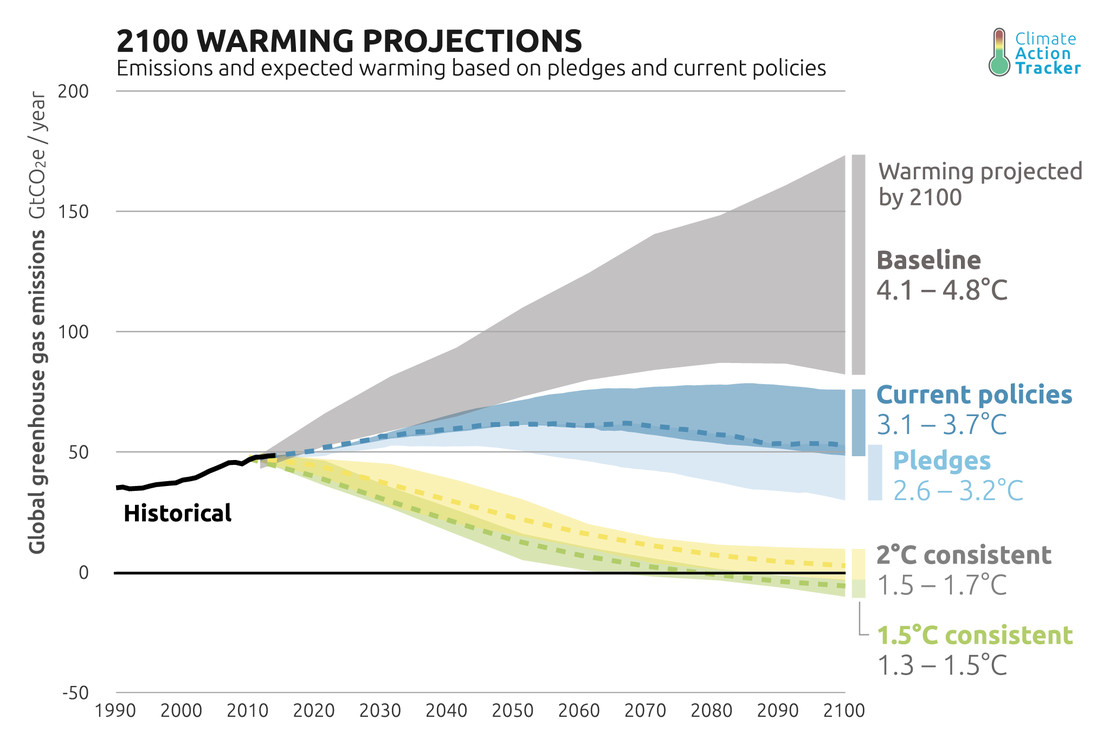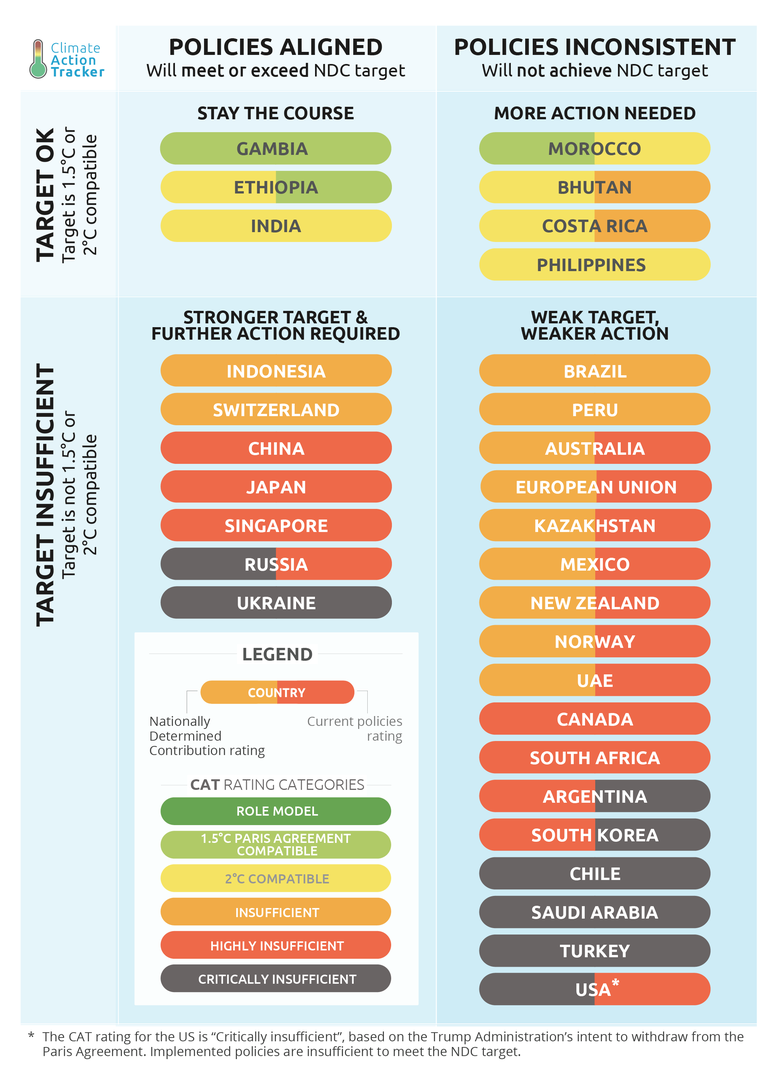Improvement in warming outlook as India and China move ahead, but Paris Agreement gap still looms large
Attachments
2017 Update
The Climate Action Tracker has updated its estimates of global progress towards the Paris Agreement goals, with some positive and negative findings:
Significant improvement
Significant improvement on climate action globally, despite US rollbacks
- 0.2°C improvement in climate action since 2016, reducing projected warming by 2100 to 3.4°C. For the first time since the Climate Action Tracker (CAT) began in 2009, the CAT has identified a significant improvement in implementing climate policy action over the past year, most significantly in China and India.
- Current policies are projected to reduce emissions by 1.7 GtCO2e in 2030 compared to estimates in 2016. The size of the gap between current policy pathways and the Paris Agreement-compatible benchmark is estimated to be 24–27 GtCO2e in 2030.
- Factoring in planned, but not yet implemented, policies and a continuation of recent developments, projected emissions would be even 4.1 GtCO2e lower in 2030 compared to last year, leading to a warming estimate of 3.1°C.
CO2 emissions have flattened
CO2 emissions have flattened in the last few years, but it is too soon to call a peaking of global GHG emissions, which needs to happen by around 2020 to meet the Paris Agreement’s warming limits.
- Although some large emitters, including China, the EU and India have either reduced—or slowed—their GHG emissions growth rate, currently implemented policies are expected to result in a further growth of global GHG emissions by about 9–13% between 2020–2030.

2100 Warming Projections

Significant deterioration in the effect of the Paris Agreement
Due substantially to President Trump’s announced intention to withdraw from the Paris Agreement, there has been a significant deterioration in the effect of Paris Agreement commitments (NDCs)—by about 0.3°C.
- Following a US withdrawal, if all other governments fully implemented their Nationally Determined Contributions (NDCs or pledges) there would be a median global temperature increase of 3.2°C (3.16°C) above pre-industrial levels in 2100, compared to 2.8°C (2.84°C) estimated in 2016. The 2017 NDC warming estimate, in probabilistic terms, represents a likely (66% or greater) chance of being 3.5°C or below.
- This increase in warming is mostly due to the US’s intention to withdraw from the Paris Agreement: we dropped the US NDC and its long-term (2050) pledge from the CAT global pathways.
- Compared to our 2016 assessment, there has been an increase—of 1.1 GtCO2e—in the emissions gap between the NDCs and the emissions pathway consistent with the Paris Agreement’s long-term global warming goal. The CAT estimates the size of the emissions gap to be 22–26 GtCO2e in 2030.
2030 Emissions Gaps

Not in line with the long-term warming limit
The majority of NDCs are not in line with a fair contribution to meet the Paris Agreement’s long-term warming limit:
- 24 governments have set insufficient targets; of these, 16 governments have implemented policies that will not even result in achievement of their targets.
- Only seven governments have implemented 1.5°C or 2°C compatible targets and of these, four are not backed up by sufficient policy action
- The CAT assessment covers 32 countries, which are collectively responsible for about 80% of global GHG emissions.

Stay informed
Subscribe to our newsletter